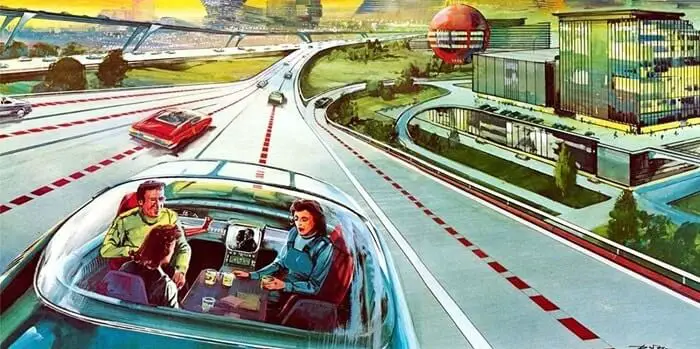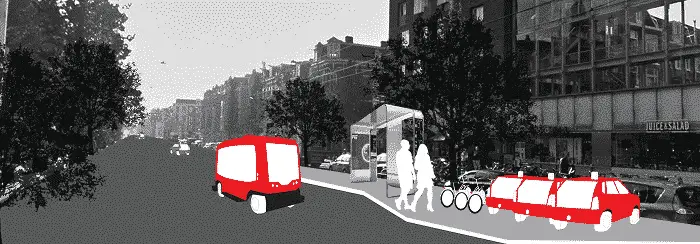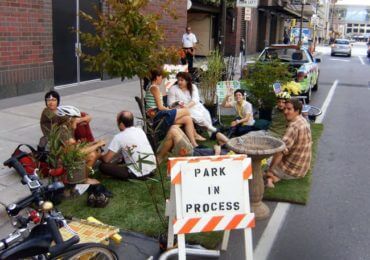In urban areas, today, Land use and transport are closely linked to each other. (Cervero & Kockelman, 1997) The mobility decisions shape the urban form of the city the citizens take in their everyday life. As the cities grow and the sprawling continues, walking and cycling are discouraged and car use is favoured. This only makes it clear that the use of a transport mode strongly influences the urban form and the necessary infrastructure of the city. The spatial development in the later part of the past century was hence driven by the availability of car and the expansion of the infrastructure to support the ever-increasing demand for motorized modes of transport. (Heinrichs, 2016) The next transformative technology in the field of transportation is set to arrive in the next couple of years to solve the mobility issues cities today are facing.
The future of mobility!
Autonomous Mobility is one of the most talked about topic in the transport industry today with cars that drive themselves, which offer the luxury of hands and feet-free driving. It is speculated that with this technology, a new transport system is expected to offer new possibilities in management of traffic and will change the way people travel today. There exist relationship between transit and land use which changes the activity taking place in an area. The most substantial changes will be observed in cities with major changes in road patterns, traffic management, parking, infrastructure, and the land use.
An autonomous car (driverless car, self-driving car, robotic car) is a vehicle that can sense its environment and navigating without human input. Autonomous cars can detect surroundings using a variety of techniques such as radar, lidar, GPS, odometry, and computer vision. Advanced control systems interpret sensory information to identify appropriate navigation paths, as well as obstacles and relevant signage. (Lassa, Todd, 2013) (EPoSS, 2015). Autonomous cars have control systems that can analyse sensory data to distinguish between different cars on the road, which is very useful in planning a path to the desired destination. (Zhu, Wentao; Miao, Jun; Hu, Jiangbi; Qing, Laiyun, 2014). Data processing will remain at the core to perform required operation and provide a safe ride. Today this technology is speculated to facilitate car sharing- shared, fully autonomous vehicles could lower the cost of personal mobility by 30 to 60 per cent relative to private auto ownership. (B. S. Bouton, Knupfer, Mihov, & Swartz, 2017) The most substantial changes will be observed in cities with major changes in road patterns, traffic management, parking, infrastructure and the land use and will pose a challenge for urban planners and designers. (Rodoulis, 2014). Adapting a positive approach towards the concepts or ridesharing and car sharing combined with Autonomous Mobility could be a step towards achieving the ideal future.
Related: Land Use Planning

Scenarios could be developed to understand the best approach to achieve the ideal future. One such scenario is that of on demand mobility systems with the help of autonomous technology. The assumption here is that the technology is developed to a high level and the concept of sharing continues. The major change, however, is that there is no trace of the traditional public transport due to the increased widespread acceptability of the technology. Mobility will become a service and this will enable efficient door to door travel for the consumers.

Impact & necessary interventions through policies
Changes in policy and rules and regulations will give self-driving vehicles high importance. Owning a car is no longer needed as sharing rides and the car itself makes it easy to travel from point A to B. Car manufactures and taxi and mini bus organizations will begin to manage the vehicles and offer personal digital assistance to arrange the routes. To travel alone will only mean that the price of travel would be higher compared to the prices for travelling with shared vehicles. The self-driving car will not be allowed to travel in denser parts of the city like the city centre to keep them green, and the preference remains for liveable inner cities in which people cycle and walk. Inner cities are redeveloped, offering all types of functions like cafés, restaurants, and business areas where people can meet.
Possibilities of reduced congestion in downtown & reduced car ownership
Owing to the ease of travel by self-driving cars, the city will become more accessible in every way helping in achieving its mobility goals. The outskirts of the city are more accessible with trips costing less than they are in the inner city which also provides the ease of accessible services in the outskirts helping in attracting more people to live close to the city area. Cities remain compact however with clearly defined city centres. Groceries and other postal packages will now be delivered automatedly and reasonably to the customer’s door. Due to the scale, large car fleets are situated in and around cities.

Related: Urban Planning – A largely Unknown Profession!
As the ownership of cars reduces along with car sharing and ride sharing systems, fewer parking spots are required, freeing up a significant amount of space for other functions such as green areas, kitchen gardens, playgrounds, cafes pedestrian pathways streetscaping and bicycle paths. When the cars or automated vehicles are not driving, they will navigate themselves to parking garages and servicing stations in the outskirts of the city taking the core areas of the city one step closer to car free, pedestrian and bike friendly zones.
Government would play the most important role in formulating policies and rules and regulations in terms of insurance, information safety, taxes, licenses etc. Smaller interventions such as upgrading the current infrastructure for roads, parking etc. from an early stage will facilitate the technological advancements in future and push the city one step to closer to a technological utopia.
Read about: Urban Planning & Technology – a never ending chase!, GIS in Smart Cities
Author Bio: Bhavana Vaddadi is a fresh masters graduate from Delft university of technology, The Netherlands.She did her undergraduate studies in Faculty of Planning from Center for Environmental Planning and Technology, Ahmedabad. Her major interest lies in the field of Urban Mobility and the arrival of Intelligent transportation systems in the future.